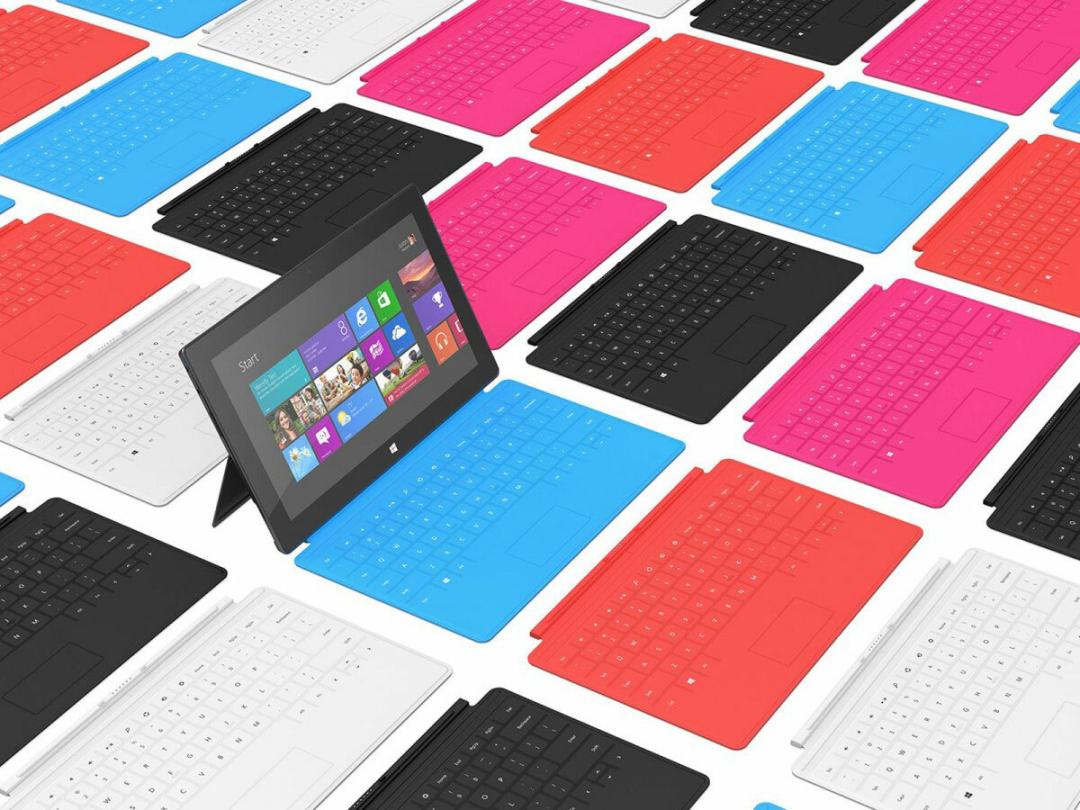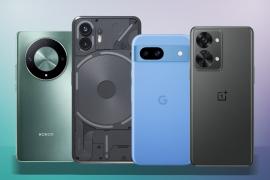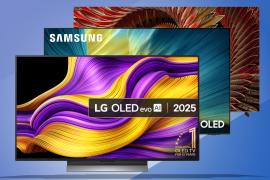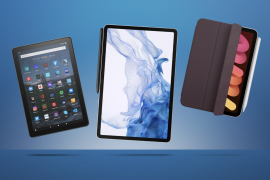Microsoft Surface with Windows RT review
The new Microsoft Surface RT feels like a natural competitor for an iPad. But, with the promise of Windows, it might be an alternative to an ultrabook

Before we get into the nitty-gritty, it’s worth trying to figure out exactly what we’re looking at here. The smaller, less powerful and cheaper of two Surface tablets, this seems like a natural competitor for an iPad. But, with the prominent bundling of a keyboard cover and the promise of Windows productivity, it might actually be an alternative to an ultraportable laptop.
And yet, with its somewhat hamstrung RT version of Windows, it can’t really rival either its Windows 8 Pro running big brother – yet to be released or, crucially, priced – nor can it truly replace a laptop. But it’s definitely something, and quite possibly something worthwhile, so don’t be disheartened – let’s look at its constituent parts and see if we can’t figure it out.
Operating system
What is RT? It’s a slimmed down version of Windows 8 designed to run on lighter and flightier ARM-chipped devices. It looks a lot like a full version of Windows 8 Pro, with the natty colourful Metro tile interface hiding a more conventional Windows desktop, but most standard desktop applications won’t install or run on RT. You’re stuck with what’s available in the Windows Store. Which means, straight off the bat, no Google Chrome, no Audible, no Spotify… not even a standalone Facebook app – your FB and Twitter accounts are synced within Microsoft’s People and Messaging app.
Mind you, Internet Explorer fairly whizzes through Flash and HTML5-heavy sites – if it wasn’t for the convenience of syncing bookmarks between different Chrome-running devices, we might put our dependence on third-party browsers down to geek snobbery. And you do get a preview version of Office for RT – Word, Excel, OneNote and PowerPoint apps that will be upgraded to full versions once the software is finalised, though we can’t actually spot any major holes in them as they are now. So if it’s productivity you want, the basics are there. Email is seamless enough, especially through the Mail app if you have a Hotmail or Outlook address, but it also loaded Gmail well and webmail through IE is pretty quick, too.
Design
If you’re a regular iPad user or even a zeitgeisty Nexus 7 owner, the Surface is going to feel big. That’s because it is – some 30-odd millimetres wider than an iPad in landscape. Thus, and combined with a thinner waist than the iPad, the Surface turned to portrait feels freakishly tall and narrow. Its shape is defined by its 16:9 screen ratio, as compared to the 4:3 screen of iOS. It’s no thicker than an iPad’s maximum, but its untapered design makes it feel like it is.
What the Surface definitely has is build quality. Its ‘VaporMg’ chassis has the colour of burnt titanium (in bright light) and both it and the Gorilla Glass screen give off a substantial air. Buttons and ports feel strong – there are no flimsy plastic covers. The tablet is charged using a proprietary connector that looks a lot like an Apple MagSafe connector. Neat, but we found it tricky to place, either way up, further hindered by the power cable itself being too short for any office or living room arrangement we tried it in.
As there’s no power block – the 12v, 2A transformer is in a single unit with the plug – there’s no option to extend the cable with a longer lead between socket and block. The tablet has a full-size USB 2.0 – so, yes, you can plug in external drives – and MicroHDMI on the right-hand side, headphones and volume rocker on the left. Under the flip-out kickstand – metal, with a positive albeit fixed-tilt action – there’s a MicroSDXC card slot. The option to add up to 64GB to the standard 32 or 64GB internal memory is always welcome.
On the bottom of the device is the magnetic connector for either Touch or Type Covers. The former is super thin with a touch-sensitive but responsive QWERTY keyboard, and can be bought separately for GBP100. The GBP110 Type Cover is thicker, but has mechanical keys with a minimalist 1.5mm movement. It ought to be better for typing but feels flimsier. The Touch cover is available in black, blue or white, giving you some ability to street up the otherwise business-like Surface. Both connect with a snap, and won’t come unattached without a determined yank – you could hang the tablet from the keyboard if you so desire.
Second opinion
The Surface feels nice and chunky in your hands and the widescreen aspect ratio makes watching movies more fun than on the iPad and you certainly don’t miss the extra pixels.
The split personality OS is more of a problem, particularly with the lack of decent apps means that for serious productivity you’re better off with a Surface Pro. Trouble is you may be in for a long wait.
In action
Presuming you buy the Surface bundled with of one its keyboard covers – and we imagine most buyers will – the first time you use it will probably be propped up on its kick-stand with the keyboard in front of you. (By the way, the Surface knows whether either keyboard cover is out in front or folded up behind and presents an on-screen keyboard if necessary. Plus, iPad-like, both covers turn off the device when they are closed. And on when opened.) The Windows 8 Live Tile interface will be in front of you, and you have the choice of flipping through them with the touchscreen, or using the trackpad on the keyboard. There are also various keyboard shortcuts and touchscreen gestures to flip between apps and files and, if this isn’t enough to blow your mind, at any given moment you could wirelessly hook up a Bluetooth mouse.
It’s the kind of user interface ambiguity that would drive Apple’s Sir Jonathan Ive into an immediate Tibetan retreat. And there are further rules to be considered, that have to do with this being the RT version of Windows 8. While you can jump from the Tiles interface to a more conventional Windows desktop, there are only a few apps you can open in Windows and drag around. A Word document and an IE web page? Fine. But if you want to watch a video while you write that report, things get trickier. The Video app is a full-screen tablet-style app. You have to minimise it, go back to the desktop and your Word doc, drag the Video back in from the left-hand edge of the screen and ‘Snap’ it to the left or right of the screen. Now it’s tiny, in a window taking up a third of the screen, but you can work on your document. Or you can drag the video across to take up two-thirds of the screen, but now your Word doc is an icon, uneditable. While this is frustrating, it’s still slightly better than an iPad, on which you’d be flicking from app to app. But it hardly feels like a great user experience. On the bigger, Daddy Surface, you’d be able to open a video in a Windows Media Player window, drag it around and resize it on the desktop. So that’s your RT limitations.
Perfomance
There are a couple of things we should immediately add to the above interface-based moaning. One is that the Surface’s Tegra 3 architecture handles HD movies with aplomb – even when you’re flicking windows about trying to resize it. Also, despite the screen’s relatively measly 1366×768 resolution, image quality is good and text rendering is mostly sharp.
And battery life is excellent – at last a good reason for getting this ARM-powered RT version. We rented a HD copy of Prometheus from Xbox Movies (for an eye-watering £5). After running it all the way through twice, then mucking about browsing, emailing and playing games for over an hour, the Surface still had 50% battery.
You might use it a little like a laptop, but in terms of power, you treat it more like a tablet – wandering of to do other things without thinking about sleeping it or turning it off. Mind you, there’s neither a 3G/4G modem nor GPS to drag on the battery, though you do get all flavours of Wi-Fi and Bluetooth 4.0. On both the frontside and the backside there are 720p cameras with twin microphones and stereo speakers. The cameras work fine for Skype-ing and the speakers might just be enough for a hotel room. Definitely not a suite, though;
Gaming
If you’ve been eyeing-up the Surface as a potential portable gaming powerhouse you’re likely to be a little disappointed, at least with this RT version. Without the ability to install standard Windows games (Football Manager 2013 on a tablet? Why thank you very much) as per the Pro version, you’re left with the games that are available on the Windows Store, and for now that’s a fairly limited and uninspiring bunch. Still, a quick blast on Hydro Thunder (converted from Xbox Live for Surface) proves that the device should be capable of pretty graphically intensive titles once developers start producing them. Although don’t try controlling it using the Touch Cover – you will finish last.
Xbox SmartGlass is onboard, too, which means you can control your Xbox via the Surface screen and access extra information when watching a film. It even ties into some games, and unlike Windows Phone 8 is already activated for use with Forza Horizon, so instead of having to dive into the menus every time you want to navigate to a new destination, you simply touch it on the Surface’s screen and the route is plotted into the game. Sure, it’s little more than a gimmick right now, but if Microsoft pushes it this two-screen tech could become a serious enhancement to Xbox gaming in the future.
Wrap-up
Wrap-up
Let’s start with the positives – the Surface is funkily chunky, well made and geared up for use with one its excellent keyboard covers. Its screen, while on paper appearing vastly inferior to that of a Retina iPad, works well for movies, while the Windows 8 interface looks fresh and funky. Battery life is excellent, too.
On the other hand, it’s big. And there’s a clumsy separation between the tablet-esque Metro experience and the present but inflexible Windows desktop that will make you wish you’d either bought the bigger Surface tablet or an Asus Transformer or an ultraportable laptop. And, finally, for not a lot more money than this Surface you could get an iPad with its super high-res display, bazillion apps and a wireless keyboard.
So for many people the Surface will be a little too niche and compromised compared to getting an iPad. Or a laptop. Or whatever else Microsoft thinks it’s going up against. But for a dedicated, contrary minority this could be precisely the pigeon hole-dodging device they’ve been looking for. And perhaps in the long-run, once it gets the apps it deserves, perhaps they’ll be enjoying the last laugh.
Stuff Says…
Cool but compromised, novel but niche, the Surface is perhaps just a little too different to find a place in your life
Good Stuff
Feels good and chunky
Nice keyboards
Office, if you need it
Bad Stuff
Split personality OS
Lack of apps
No Retina display



